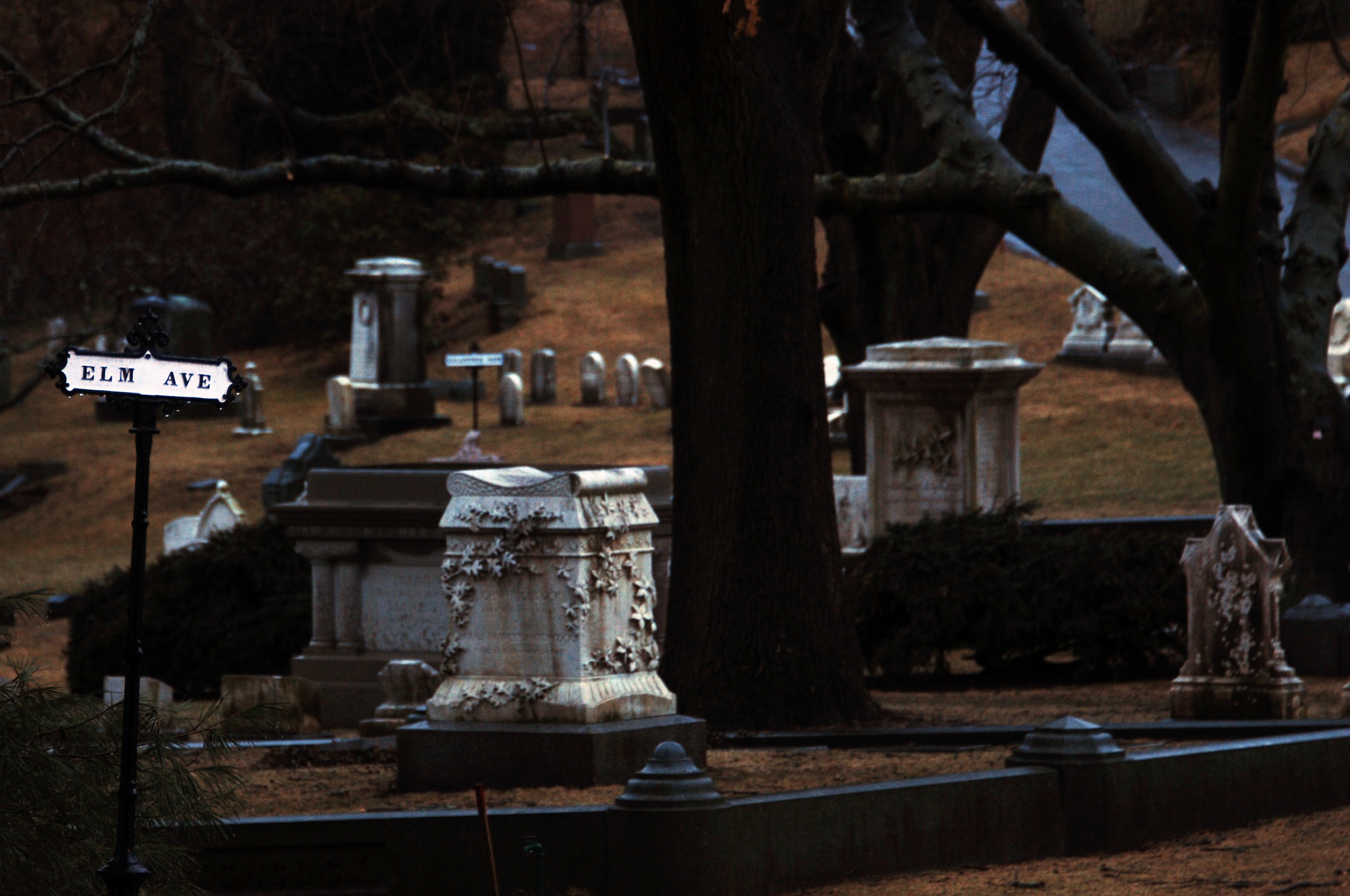
Among Them
On the way to Mount Auburn Cemetery, I wonder whether there are etiquette rules for visiting the home of the dead. There will be no doormat to wipe my feet on, nowhere to hang up my coat before I step right up to someone’s grandfather, nose nearly touching his engraved middle name. Is it rude, I ask myself, to step on the grass, mud sinking into my shoes, the malleable layer above the hard caskets six feet below? Something feels intrusive about casually scanning those birthdays and death dates, the em dash in the middle that suggests everything in between. Should I have brought flowers?
At least, I realize, I happen to be wearing black.
The cemetery was established in 1831 by the Massachusetts Horticultural Society, and has over 44,000 monuments and 95,000 graves. Among these are the final resting places of Elizabeth Cary Agassiz, founder of Radcliffe College, and John Murray, who brought Universalism to America. Murray lies under a tall steeped pillar, topped with what looks like a large stone goblet. Agassiz’s tomb is an uncut stone. Besides housing these graves, Mt. Auburn is also a world-class arboretum, with over 80 different taxa and more than 1,500 plants.
In both cemeteries and arboretums, labeling is everything. Lyman Nichols lies deep under a stone engraved 1806-1878. Next to him, a Japanese Maple stretches into the sky, accompanied by a single date, 1912.
The visitor’s center is a small desk in the entrance hall of a small Gothic chapel flanked by for-sale postcards and prints. The cemetery offers audio tours called “Reflections,” “Sweet Auburn,” and “Changing Tastes,” but the white-haired woman who greets me tells me that tours stop after 2:00—it’s 2:14. So I set off on my own, path chosen at random.
Without the audio tour, I make up my own stories about the buried lives I pass. Some personalities can be easily imagined from their gravestones. The family of one Lieutenant Waldo Mirriam has chosen a vast gray stone in imitation of an above-ground casket, engraved “died in battle.” On its surface lies a stone cowboy hat, whip, and spurs, as though, should he suddenly wake up, he could grab his gear and go. I imagine him flagging down a stone horse as one would a taxi.
I am nearly alone here—for a long time the only other stroller I encounter is a bearded man in a blue cardigan, who I see from a distance. He walks speedily, with purpose and a cane. Or really, I am not alone here, but surrounded, by 95,000 thousand corpses—souls, give or take religious belief—95,000 lives contained in em dashes.
More graves, more stories. A family, the Burlands, have all been entombed under matching pentagons, perfectly symmetrical. The kind of family, I think, that posed for Christmas photos in height order, tallest in the center. Two are named John.
The Livermores also lie together, eight of them. But two of these stones are rounded, geometric outcasts standing amongst the other five rounded tops. A discontinued design, I wonder, or a slight against Sarah and Thomas?
Some families are locked in mausoleums, structures I had only ever seen in movie adaptations of Romeo and Juliet. They look like the most ornate tool sheds you have ever encountered, with pillars and engravings and statues of saints I can’t identify. The steps that lead up to them are also made of stone, and on them, the carver has often engraved stone bundles of flowers. Insurance, perhaps, for neglectful relatives.
I look into the window of one, and the marble caskets are built into the stone walls. They’re flanked by American flags, the small ones my parents buy for decoration on the Fourth of July. Dated family photos show stern and collared aristocrats. Opposite from me, a stained glass window seems to depict a family seal, a design centered around a cluster of white daisies that match the tombs. I try to push open the door, but it’s locked. I try a few more, and each mausoleum is sealed.
I circle a frozen lake, so round that it looks stolen from a storybook, bordered with small slabs and large pillars. The stones of the Rice family slant toward it, as if about to dive into the water, hands clasped and shouting, one summer night.
Around the lake must be prime real estate, if there’s such a thing in a cemetery. The graves, after all, have addresses. For instance, Barney Hall lives at 3892. Questions of life after death aside, there must be something comforting about being able to name the exact location of your lost loved ones, as though from an address book.
A huge white gazebo stands across from me, and I walk toward it. It’s made of stone and has plants where you’d normally stand inside, but I can climb partially up the steps and look out at the frozen lake. I am alone and I am among thousands. It sounds morbid but to me there is something comforting about the gentle drift of anonymous death through life, something complete and circular.
I look for a name on the gazebo, but there is none. Or more likely, there is, but it’s hidden at this angle—by the shadow of a bush or a fallen branch.


